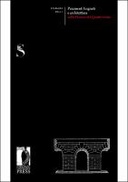Explore

Paramenti bugnati e architettura nella Firenze del Quattrocento
Gianluca Belli
2019
0 Ungluers have
Faved this Work
Login to Fave
This book investigates the evolution of rusticated facings in perhaps one of the most significant contexts for their history, namely the architecture of the 15th century in Florence, where the development of this type of masonry intertwines with that of the buildings constructed over the century. Their main distinctive trait is naturalism, which in different shapes and degrees permeates every facing, thus becoming a sort of local inflection, which contaminates even the most up-to-date languages. The Florence renovatio of ancient architecture passes indeed from the masonries, as pointed out by many writings from that period, which describe their contemporary rusticated facings and compare them to the massif ancient opus quadratum. While accepting the lesson on magnificence by the Julio-Claudian rustication, Florence facings would never become a faithful reproduction of the Roman models, but would always retain traditional characters and patterns, constantly oscillating between an expressive freedom and a yearning for the rigour of form.
This book is included in DOAB.
Why read this book? Have your say.
You must be logged in to comment.
Rights Information
Are you the author or publisher of this work? If so, you can claim it as yours by registering as an Unglue.it rights holder.Downloads
This work has been downloaded 22 times via unglue.it ebook links.
- 22 - pdf (CC BY-NC-SA) at OAPEN Library.
Keywords
- Architecture
- History of Architecture
- The arts
- thema EDItEUR::A The Arts::AM Architecture::AMX History of architecture
Links
DOI: 10.36253/978-88-6453-905-8Editions

